Introduction
Chronic pain is defined as a pain which has persisted for longer than three months. It refers to ‘chronicity’ i.e. time, rather than severity of pain, although chronic pain is often also severe. The unhappy marriage of long-lasting, severe pain symptoms is frequently the reason why patients seek out our help, since living with chronic pain can be an overwhelming and debilitating experience. If this does affect you, your colleagues, friends or family, you are in good company – it affects millions of people worldwide physically, emotionally and socially. As an osteopath, much of my professional life is spent helping those with chronic pain. Here I shed light on chronic pain and demystify its complexities, providing insights into how manual therapy can be an effective approach to manage and alleviate chronic pain
Understanding Chronic Pain
Chronic pain is defined as pain that lasts for more than three to six months or beyond the normal healing time of an injury. Unlike acute pain, which serves as a warning sign of potential harm or injury, chronic pain can persist long after the initial cause has healed. It can result from various conditions, including benign musculoskeletal disorders, autoimmune diseases, nerve damage, or as a consequence of past injuries or surgeries. Moreover, emotional challenges we have are a hugely significant contributor also.
In my experience it is typical to find that patients have a ‘multifactorial’ presentation by which I mean the pain has occurred due to a variety of reasons i.e. history of minor injury, musculoskeletal disorder, and also have had a emotional challenges (e.g. stress; grief; loss; anxiety; anger etc. etc.)
As patients who have come to see will testify, my opinion and approach to chronic pain is not purely a ‘manual’ approach. This is because it is necessary to address all the threads of life that weave together to create the multifactorial presentation. These threads which have derived from our physical and emotional experiences in life can become entwined. Over the course of providing thousands of treatments I have become acutely aware of the overwhelming significance of emotional trauma (or ‘life’) in every case I see.
On average across all patients I have ever seen, I estimate (and quote this to every new patient) the proportion of emotional versus physical trauma to be 80:20. Put simply, the overwhelming contributor to chronic pain, in presentations I have seen, is emotional rather than physical. All experiences which occur in life are relevant as threads which weave the rich tapestry of our human form. Nevertheless the body doesn’t discriminate between physical or emotional trauma, it simply absorbs and stores it. My job as an osteopath is to untangle this.
How the body stores life experiences
The rich tapestry of life may seem an abstract analogy, however in fact it is more literal. The body in this analogy is the tapestry, bound together by the connective tissue within our body, which weaves around every fibre of our being. This connective tissue or ‘fascia’ connects the body, but also reflects the mind and spirit. The threads which form the tapestry are the experiences we have in life – both physical and emotional. The ‘tapestry’ is therefore a pictorial representation of this. My role is to perceive this tapestry in order to help a patient untangle, with positive clinical outcomes.
Processing pain and un-tangling
My approach to chronic pain management is ‘holistic’ in the true sense, meaning addressing all aspects of why a patient is in pain – this leads to clinical results. The approach which needs to be taken in order to help someone process pain and untangle is different in every single case, and is also very specific.
The first and most important part of the process is to ensure the patient feels comfortable. This may seem trivial, but it forms around 90% of the process. Only if the three elements of a human being – Body, Mind and Spirit are all present is it possible to guide a patient to full and lasting change. Body – The patient must be comfortable on the couch, with the therapist and in the room/space, and also the right temperature. Mind – the patient must be able to trust the practitioner – full trust, fully calm – ready. Spirit – the physical body is just one of many bodies which make up a human being. Only when these bodies are all present, can full change happen.
It is typical in the first treatment to set foundations both in the physical body, mind and other bodies before full change occurs. Seeking the root cause, termed the ‘primary lesion’ in osteopathy, is the ultimate goal. Find this and the true root of pain will be found. That is my role.
How I approach treatment for Chronic Pain
Patient-Centered Approach: Each individual’s experience with life is unique, therefore each treatment approach needs to perfectly match that.
Understanding a case: Seeking to understand a case starts before you come in. We either start with a complementary phone call and/or we will ask you to complete a form, which gives an outline of your case.
Diagnosis – seeking the primary lesion: Whatever is causing the body to be tangled must be found. This is usually within all three elements of Body, Mind and Spirit. This is diagnosed using a variety of manual techniques. No extra equipment is necessary.
Techniques for treatment: Treatments involve gentle manual techniques, often very subtle, some other more manual techniques (mobilisation, adjustment) may be used. However it is not the technique which is significant, it is the ability of the practitioner to understand the issue at hand, which creates the change.
Progress: Outcome is clearly key – the goal is to provide relief from chronic pain. A thorough case review occurs before each treatment to ensure progress is made, alternatively that a referral for alternative treatment is made. We cannot guarantee success, but we can guarantee you will have 100% focus on your case.
Conclusion
Chronic pain is a challenging and complex condition that affects millions of people around the world. My commitment is to provide a compassionate caring approach to individuals to relieve chronic pain. By embracing the principles of osteopathy and focusing on holistic treatment, we can help patients find relief, regain function, and improve overall quality of life. Untangling is key to success – finding the primary lesion. If you or someone you know is struggling with chronic pain, call us to discuss your case. We receive calls every day from patients wanting to chat through their case and explore our patient-centred, comprehensive approach. We look forward to helping.


